

It has been just over three years since Russia captured Mariupol. Over that period, Russian authorities have relentlessly endeavored to paint a picture of successful post-war reconstruction. State-sponsored media airs glossy reports of new housing projects, while the facades of buildings gutted by fire are given a fresh coat of paint. But the reality on the ground is a far cry from these carefully curated images. The city remains in ruins, jobs are virtually nonexistent, and the compensation offered to residents for their destroyed homes is a pittance. Worse, due to the occupation administration's policies, even citizens loyal to the regime in Moscow risk losing their homes. For those who are not, a pervasive culture of snitching means any online comment can lead to repression.
Content
Destruction and Graves
The Digital Witch Hunt
The Pretty Wrapper
Unemployment and 'Ownerless' Homes
Aleksandr [name changed for security reasons] created the “Mariupol Now” channel on Telegram on March 2, 2022, just a day after Russian troops entered the Ukrainian city. With communications down and reliable news from familiar sources gone, he began to gather whatever information he could from neighborhood chats and local groups.
In those first weeks, the channel was a grim feed of photos and videos of destroyed buildings. Occasionally, these were interspersed with video addresses from Azov commanders or President Volodymyr Zelenskyy. But most posts were raw, desperate messages like: “House on Azovstalskaya Street near the Iriska store I don't know the number seventh floor apartment is on fire” — often typed without any punctuation.
For people trapped in basements, the channel became a vital resource. When Russia cemented its occupation, Aleksandr, who had managed to leave Mariupol, continued to run it — with the Ukrainian flag still proudly displayed on its logo.
“You can imagine the spin the occupying media puts on the news,” the channel's author says. “If we weren't here, they would completely dominate the information space. Unlike them, we report on what's really happening. We don't invent anything — we stick to the facts. And if you compare our subscriber numbers to theirs, you can see that people are still hungry for the truth.”
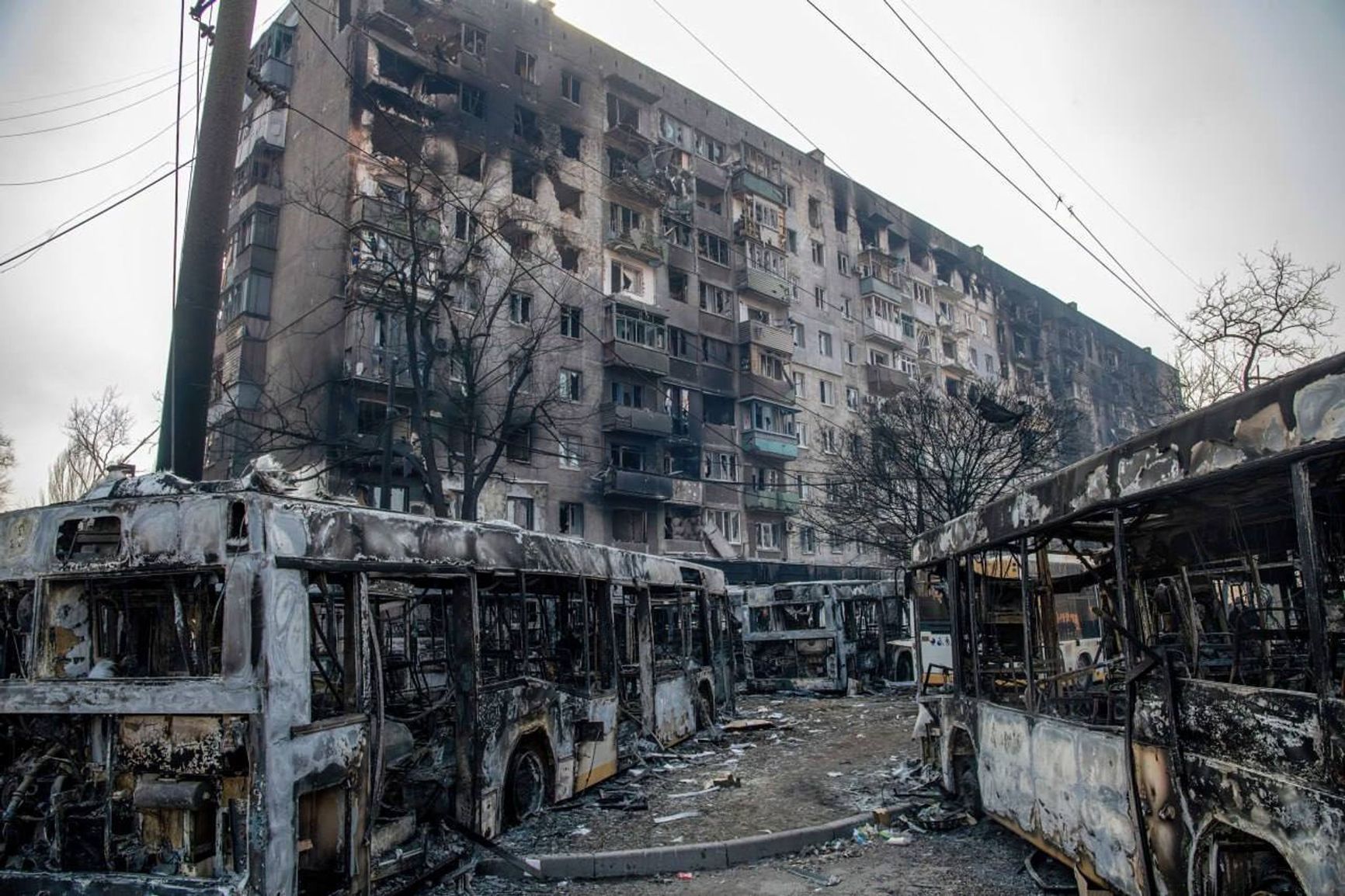
Mariupol, Spring 2022
Nearly every news post on “Mariupol Now” garners 25,000 to 30,000 views. A photo compilation marking the third anniversary of the city’s occupation surpassed 41,000.
For Aleksandr, his channel is a continuation of the war.
“This is our city. They took it from us, but the occupation doesn't change the fact that we love it and miss it dearly,” he says. “We will not hand them the gift of our silence — we will not stop running this channel. For them, that would be a major victory. They may have seized Mariupol physically, but we are the ones who have won the virtual war for the city.”
Destruction and Graves
For many residents of Mariupol, the war created an urgent need to bear witness. Lilya fled her hometown in mid-March 2022 as soon as a humanitarian corridor to Ukrainian-held territory was opened. She soon realized her phone was crammed with horrific footage from the Russian siege. She hadn’t set out to be a reporter — she had simply filmed what she saw on her daily search for food and water.
Lilya created a channel called “Kadry Voiny” (Footage of War). It was partly a way to share what she had seen, and partly a way to free up space on her phone without deleting the evidence. Before the war, she had administered a city-wide chat on Viber, and so she created her new channel on the same platform. The concept proved to be in high demand.
“Everyone wanted to see their homes. I helped people find photos and videos,” says Lilya. “In the beginning, many Mariupol-based bloggers were actively walking the streets and filming everything. It was only later that they slid, en masse, into Russian propaganda. But we remained pro-Ukrainian.”
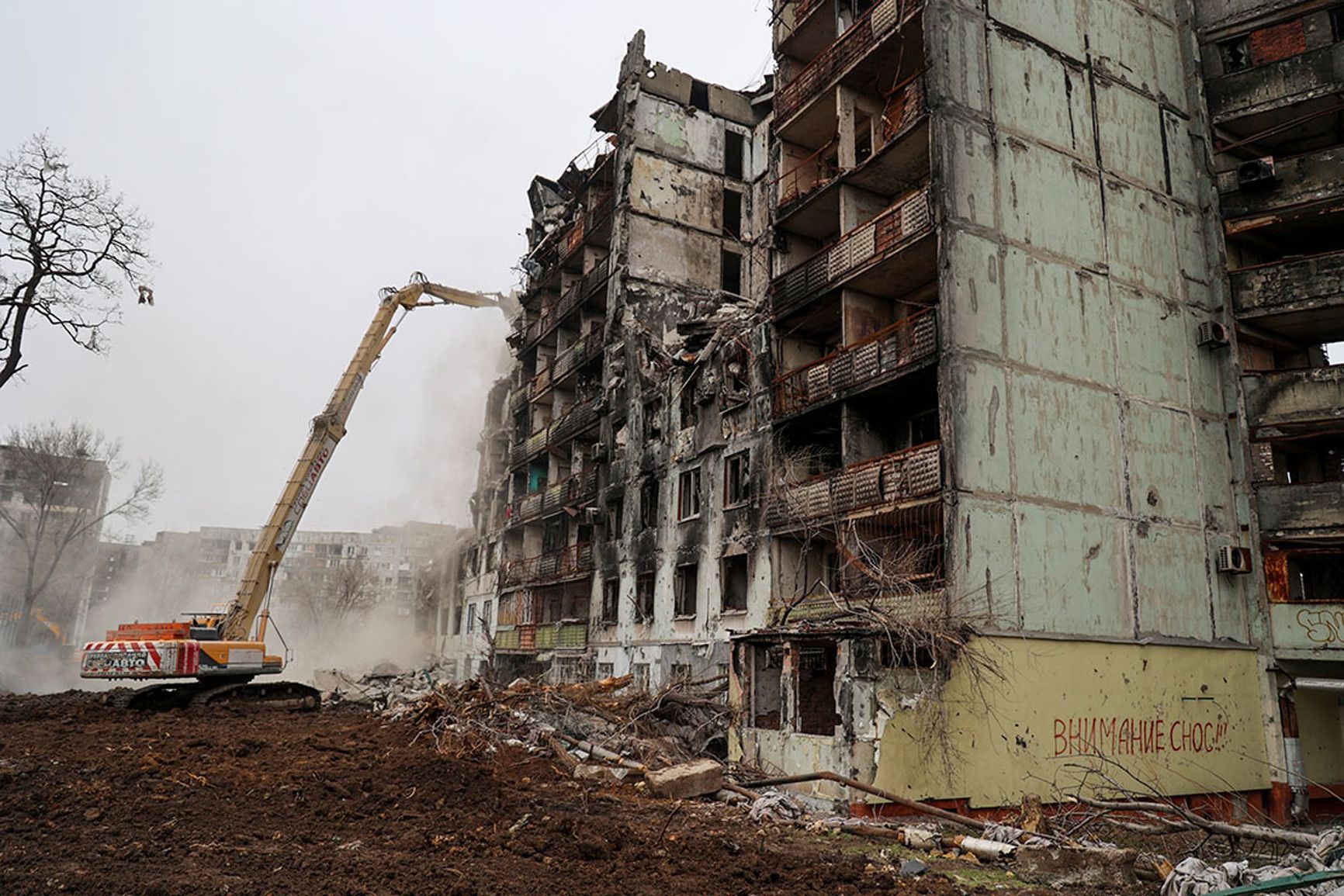
Destruction in Mariupol
Today, the creator of “Footage of War” is far from home, but she continues to maintain the channel and its chat group. Her readers are pro-Ukrainian residents of Mariupol. Some are in exile, like her, while others remain at home, living under occupation.
Stas [name changed] scours local chat groups, searching for information about the dead — and for their burial sites. He oversees this section for a volunteer project called the “Map of Mariupol’s Destruction.” The map already pinpoints 2,500 destroyed homes, 57 schools, 23 universities, 21 kindergartens, 25 hospitals and clinics, and 20 churches — along with a UN report stating that 90% of all buildings in the city were damaged or destroyed. To date, the map has marked the locations of approximately 600 deaths.
Documenting what happened is a form of psychotherapy, Stas explains.
“For many people, the memories of those first months are blocked, and they trigger an extreme psychological reaction. They simply don’t want to discuss what happened in the besieged city. They prefer to forget. All of this leads to alcoholism and mental health problems. But if you talk about it openly, it becomes easier.”
In the first month of the war, Stas was nearly killed when a mine exploded nearby. He lay unconscious for almost two weeks. When he came to, he managed to escape to Europe with his entire family. His volunteer work began when a friend, who had been out of the city when the invasion began, asked Stas to describe what had happened. He opened a map of his neighborhood and began to mark everything he remembered: shell impacts, graves, destroyed buildings. Soon, there was no empty space left on the map.
Stas quickly joined the “Map of Mariupol’s Destruction” project, an initiative started by a man with no connection to Ukraine, who had never even set foot in the city. Vitaly Shtutman, a Moscow native now living in Haifa, Israel, launched the project because the footage from Mariupol in the first days of the invasion reminded him of Grozny, a city he knew well.
“I served there before the First Chechen War and would often go into the city on leave,” Shtutman recalls. “So when the footage of the battle for Grozny appeared on every television, I understood the scale of the tragedy and destruction far better than most. The videos from Mariupol gave me a sense of déjà vu. I decided to make a map so that people could comprehend how this city, too, was being annihilated.”
Vitaly searched for evidence of Mariupol’s destruction everywhere, from journalistic reports to neighborhood chat groups, and he soon connected with Stas. Today, a team of ten people works on the project. All of them but Vitaly are from Mariupol.
The process of gathering information for the map sometimes helps clarify confusing episodes from the war’s early days. For example, the project’s volunteers recently unearthed footage of a Russian tank on the outskirts of Mariupol filmed on February 28, 2022 — even though it was previously believed that no Russian military hardware had entered the city before March 1.
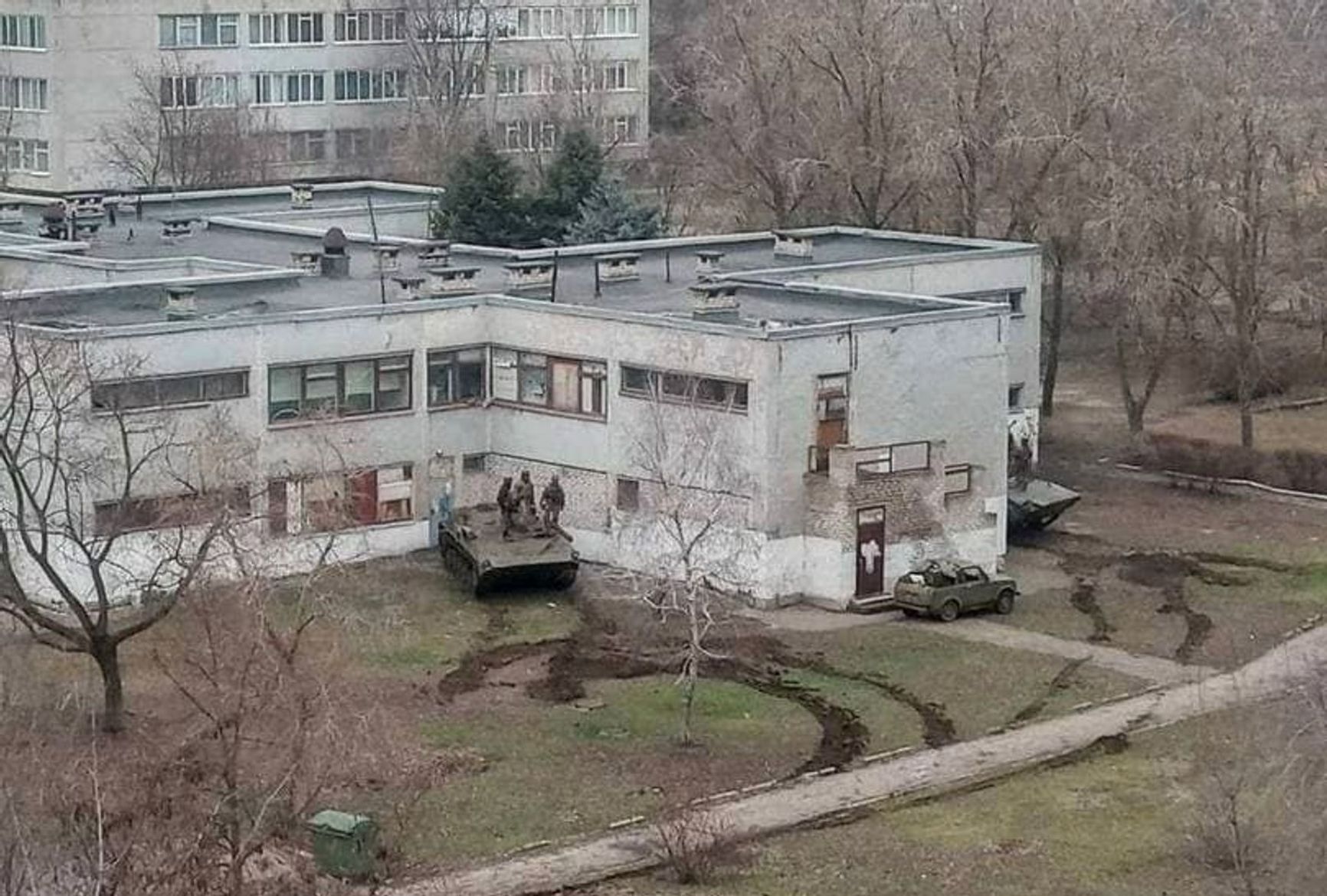
Russian military equipment in Mariupol, February 28, 2022
Urban warfare is a mosaic of private tragedies: a bombed-out apartment, a burned-down shop, a pedestrian killed at a crosswalk. While many of these stories have been reported individually, it is the sheer scale and systematic documentation that paints the complete, devastating picture. Not just a single destroyed house, but the documentation of 2,500 ruined buildings.
The “Map of Mariupol’s Destruction” website lists 3,500 victims by name, and this grim tally continues to grow — the true number is clearly much higher. Human Rights Watch has counted 10,300 civilian deaths. As early as March 2022, Ukrainian authorities in Mariupol estimated civilian losses had reached 20,000 people, and today they cite a figure of 25,000.
Ukrainian authorities in Mariupol estimated civilian losses had reached 20,000 people
Initially, while Russian forces were still on the city’s outskirts, many of the dead were registered in hospitals, as the severely wounded could still be transported for care. Stas describes in painstaking detail the system of morgues and burials that emerged during the battle for Mariupol.
The first mass grave was organized in early March 2022 by the Ukrainian authorities themselves. They brought an excavator to a vacant lot near an old cemetery and dug a trench for one hundred people. At that point, the process was still official, and the names of anyone who could be identified were recorded. Later, makeshift morgues began to appear in nearly every neighborhood, many set up in shops. “By the time the occupiers came in, bodies were just lying in the streets,” Stas recalls. “The Russians organized their own large morgues for them. One was set up in a wholesale warehouse at 21 Zaporizhske Highway.”
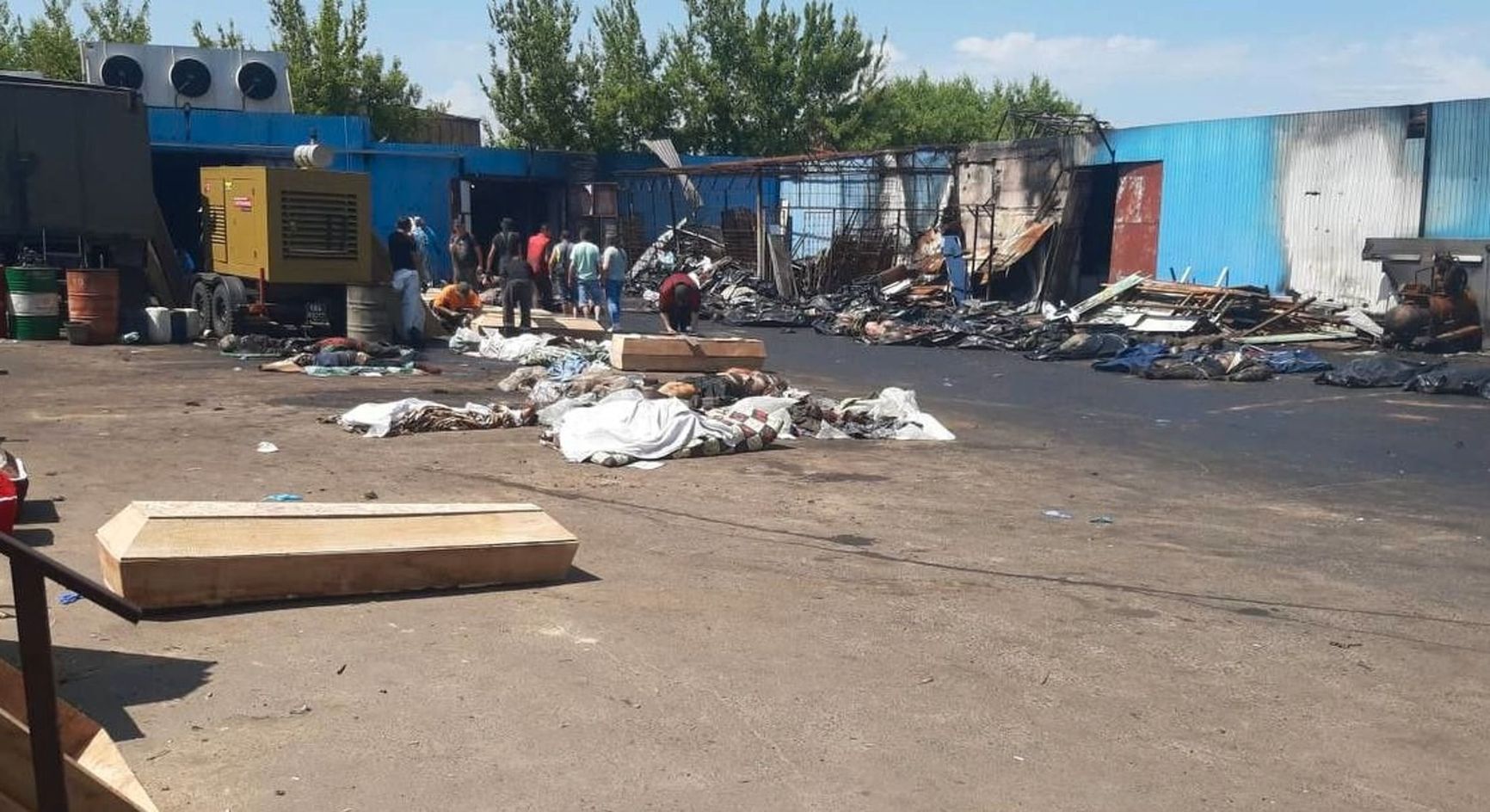
A makeshift morgue in Mariupol
The volunteer reels off a few addresses from memory. In the Cheryomushki district, a makeshift morgue was set up in the Shans convenience store. On the Left Bank, there was one in the Amstor supermarket. In the Kirovskyi district, it was in the Gratsiya shop. The back rooms of a store at 127 Prospekt Mira held around 200 bodies — the occupation authorities have since demolished that heavily damaged high-rise, and Stas worries about what happened to the remains.
“All the residents and journalists were waiting for the go-ahead to identify the bodies. But that never came. Apparently, the bodies were just hauled away and buried somewhere,” he says. “Now, the authorities are building new apartment blocks on the sites of the old ones, and often they don't clear the ruins properly. They just cart them away, even though locals know that victims are still buried under the rubble.”
The Digital Witch Hunt
Although the channel Lilya runs is pro-Ukrainian, during the first year of the war it was frequently visited by pro-Russian users. Heated arguments would break out, prompting the channel’s owner to ban profanity and mutual insults in order to maintain a civil atmosphere. But over time, the squabbles died down.
“My pro-Ukrainian members are either people who have left or older residents who couldn't leave. But lately, they’ve fallen silent,” says Lilya. “I remember one woman who used to argue actively with the vatniks [a derogatory term for fervent pro-Kremlin patriots], and then she just disappeared. I don't know what happened to her. But even now, there are many people in Mariupol who remember who attacked their city and destroyed it. Another thing: after Russia and the occupied territories blocked Viber, many of the pro-Russian users migrated to Telegram.”
Aleksandr, who does not forbid harsh words against the Russians on his channel, estimates that about 70% of his subscribers are Mariupol residents who have left, while 30% are those who remain. And he is convinced that many living under occupation are simply afraid to subscribe.
“If you’re stopped for a random check and they see our channel on your phone, you could be in serious trouble,” he explains. “People there who aren’t pro-Russian just try to get by: they keep their opinions to themselves, they go to work, they try to live as normal a life as possible. I still have many acquaintances living there. And naturally, in the context of current discussions about ‘frozen conflict’ scenarios, the opinions of people whose city has been occupied are crucial. That’s an important part of what I write about.”
For pro-Ukrainian residents of Mariupol, any comment made on the channel puts the user at risk of being reported, says Aleksandr. “There are pro-Russian groups who monitor our channel and others for pro-Ukrainian comments. They take screenshots and post them in their own groups, leaking the person’s phone number and photos. They also forward all of this to their ‘security services’ so that they can hunt these people down in the city. The most astonishing thing is that before the war, these informers were nobodies. Now, thanks to their vileness and collaboration, they have an audience and some semblance of status. I know one of them was a failed businessman and another was a student. Now they’re the biggest ‘patriots’ around, whose entire activity boils down to plain old snitching.”

Mariupol, Spring 2022
Lilya also speaks of these “online informers.” On Telegram, there is a channel called “SMERSH Mariupol” which, alongside crude caricatures of Zelenskyy and foreign leaders, publishes posts containing the personal data of pro-Ukrainian citizens. These posts feature photographs, usernames, screenshots, phone numbers, and addresses, often with captions like: “Supports the Kyiv regime, expects the return of Russia's new regions to Ukraine, an active member of the organized crime group 'Mariupol Now 🇺🇦.' Curses citizens of the Russian Federation.”
Often, the targets are Mariupol residents who have already fled, and the main harm the informers can do is prevent them from ever returning home. At Russian airports, residents from the occupied territories are subjected to “filtration,” and many are denied entry. Mariupol residents have a name for this: “failing Sheremetyevo,” a phrase taken from the name of Moscow’s main airport. Aleksandr stresses that simply being subscribed to his channel is enough to be turned away.
At Russian airports, residents from the occupied territories are subjected to “filtration,” and many are denied entry
In their own chat groups, the informers share video messages from people who were barred from returning home. In one such video, a woman recounts how she, her husband, and their five-year-old son were held at Sheremetyevo for 15 hours before being turned away after finally being told they “represent a threat to the national security of Russia.” The video is accompanied by mocking comments from supporters of the occupation.
Within the city itself, dissent carries the threat of far more severe repression. In April 2024, Ekaterina Netetskaya, a resident of Mariupol, was sent to a pre-trial detention center in Donetsk. A single comment online led to the 21-year-old being charged under the article for “justification of terrorism.” While it is known that Ekaterina was released and sent home in December, there has been no official report that the case against her has been closed.
Lilya no longer lives in the occupied territories, but for security reasons, she conceals her last name and current location. She is genuinely baffled by how her former neighbors could have changed so drastically.
“This is my city, my home. To be honest, I was always against the DNR, even back in 2014. I must have a thousand acquaintances, but I only know of one person who participated in their ‘referendum,’” she says. “I can understand those who take Russian passports just to survive. But those who changed their country and their beliefs so easily — that is something I cannot understand.”
The Pretty Wrapper
“Driving through the central streets and avenues of Mariupol, you realize that life here and now is little different from life in other cities of our great country. There are green parks where couples in love go for walks. During rush hour, there are even traffic jams,” proclaims one of the many Russian television reports marking the third anniversary of the city’s occupation.
Before the war, Mariupol was home to around 450,000 people. A UN report stated that 350,000 of them fled. Yet in December 2024, Vladimir Putin claimed that no fewer than 300,000 of those who left had returned. On Russian television, they show construction sites and renovated buildings. But residents of Mariupol, regardless of their political views, know this is not an accurate picture.

Mariupol under occupation, 2023
Maria, a volunteer with the “Map of Mariupol's Destruction” project, says that not one of her former neighbors has come back.
“That claim about returning residents is a pure lie,” she says. “The city is full of destroyed private houses where nothing is being done and no one lives. The same goes for the apartment buildings that were burned out. You can see by the windows that they're empty. I’ve seen so many of them in the city center, on Prospekt Mira. In the buildings that survived, there are many empty apartments or apartments being rented by migrants. I know one migrant who is planning a sham marriage to get citizenship, build a house, and stay in Mariupol forever.”
The problem, Maria explains, is that the repairs are usually only facade-deep. “The city is in a pretty wrapper. I once struck up a conversation with a construction foreman, and he told me they were redoing the facade and the building entrances, plus the windows, doors, and utilities. But inside the apartments, the residents have to do the repairs themselves — and this is in a building that was completely gutted by fire.”
In the old city center, many buildings are painted on the outside but are empty husks within. At night, their windows are dark. Sometimes, Lilya passes along from her contacts still in the city, the floors inside have simply collapsed. “Mariupol is a very large and sprawling city. They’ve turned the main central streets into a storefront. They painted the facades. But step a couple of houses back, and everything is bombed-out and burned.”
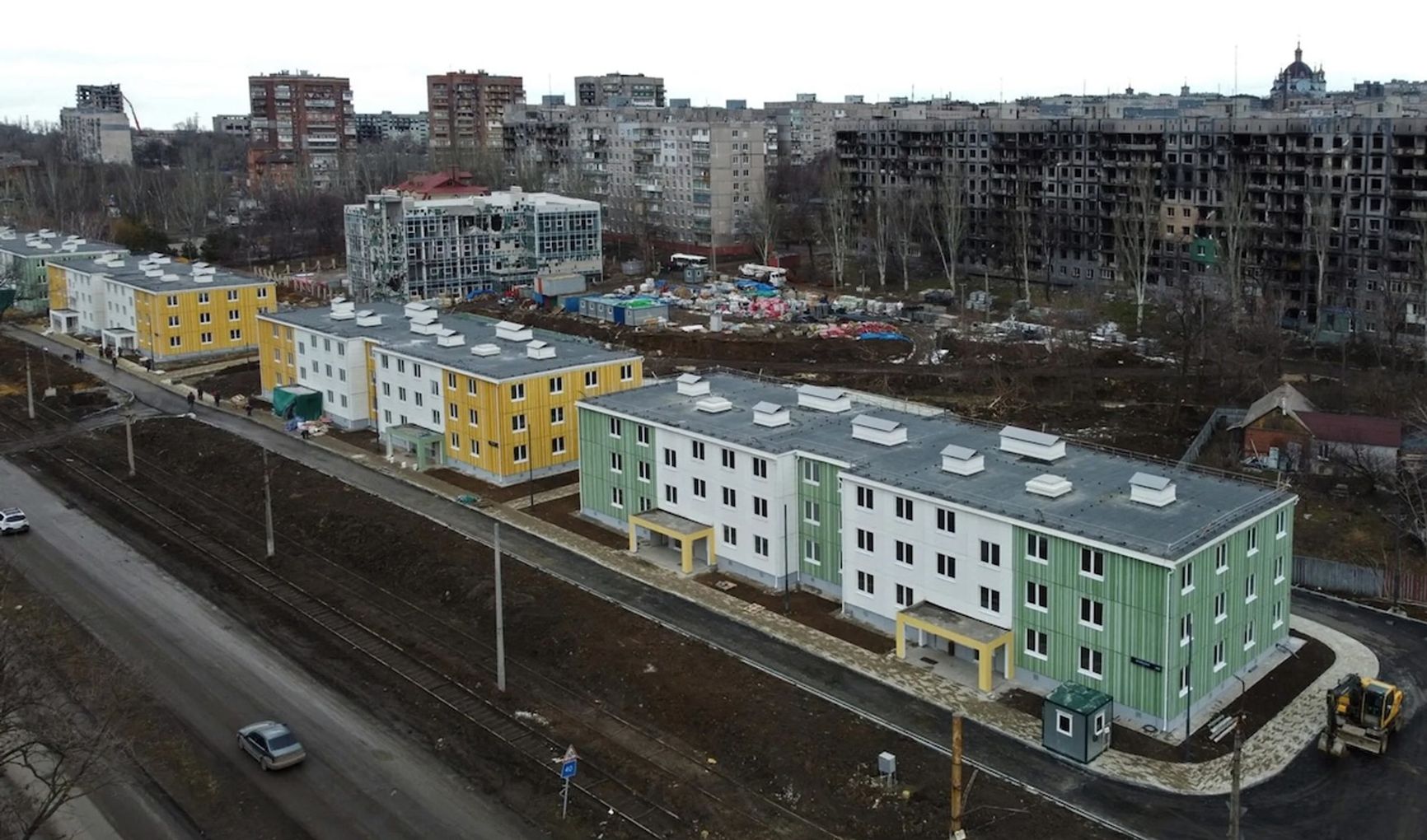
Restored facades against a backdrop of destruction in Mariupol
Anna [name changed] is a supporter of Russia. She has received her Russian citizenship and believes it was the Armed Forces of Ukraine that destroyed Mariupol. She either avoids contact with her Ukrainian acquaintances, or they simply “don't discuss politics.” Nevertheless, her account confirms everything the others have said.
According to her, the claim of 300,000 returning residents is nowhere near the truth. There are far fewer people in the city than there were before 2022. However, there has been a large influx of arrivals from Dagestan and Chechnya.
“They believe they are the ones who took Mariupol, and that the city is now theirs,” she says. “Their behavior is appalling. They are constantly causing traffic accidents, and you can’t get the police to respond. The cafes, the shops — it's all theirs now.”
Anna owned an apartment in a two-story “Stalinka” — a Stalin-era building — in the center of the Left Bank district. It was built by German POWs and was considered good housing, despite its wooden floors and ceilings.
Her family fled the city, and while they were going through the filtration process to enter Russia, they learned from neighbors that their building had burned down after being shelled. By March 2023, however, repairs had begun. The internal structures and the staircase were restored, the facade was fixed, and new steel doors were installed on the apartments. But that’s where the work stopped. There is no water, gas, electricity, or plumbing. Inside the apartments, nothing was repaired at all, Anna says.
“You open the door, and there’s no floor, no ceiling. They paid me 220,000 rubles ($2800) in compensation. That money isn’t enough for anything. I haven’t touched it, because one of the officials in charge of housing and utilities promised that we could return it in exchange for a fully finished, turnkey renovation. But so far, I don't know anyone who's actually managed to get one.”
Unemployment and 'Ownerless' Homes
Among Anna's pre-war neighbors in Mariupol, only two pensioners remain, and they are now living with relatives. It’s not just supporters of Ukraine who have fled — Anna and her family also only visit Mariupol sporadically, because there is simply no work in the city.
The city's economic backbone had been its two metallurgical plants, but Russia has no plans to rebuild Azovstal. And while there are plans to restore the Ilyich Steel and Iron Works, that day is still several years away. Some steelworkers, like Anna's husband, have left to work in Russia, mostly in the large factories of the Tula and Lipetsk regions. Others have taken jobs in construction.
“The scams on these construction sites have become legendary,” Anna says. “I personally know people who did the work and never got paid. There’s less construction now. They’re almost exclusively building homes to be sold with mortgages. The schools are open — my friend is a teacher — but the salaries are low and not always paid on time, even if she says it has gotten a little better recently.”
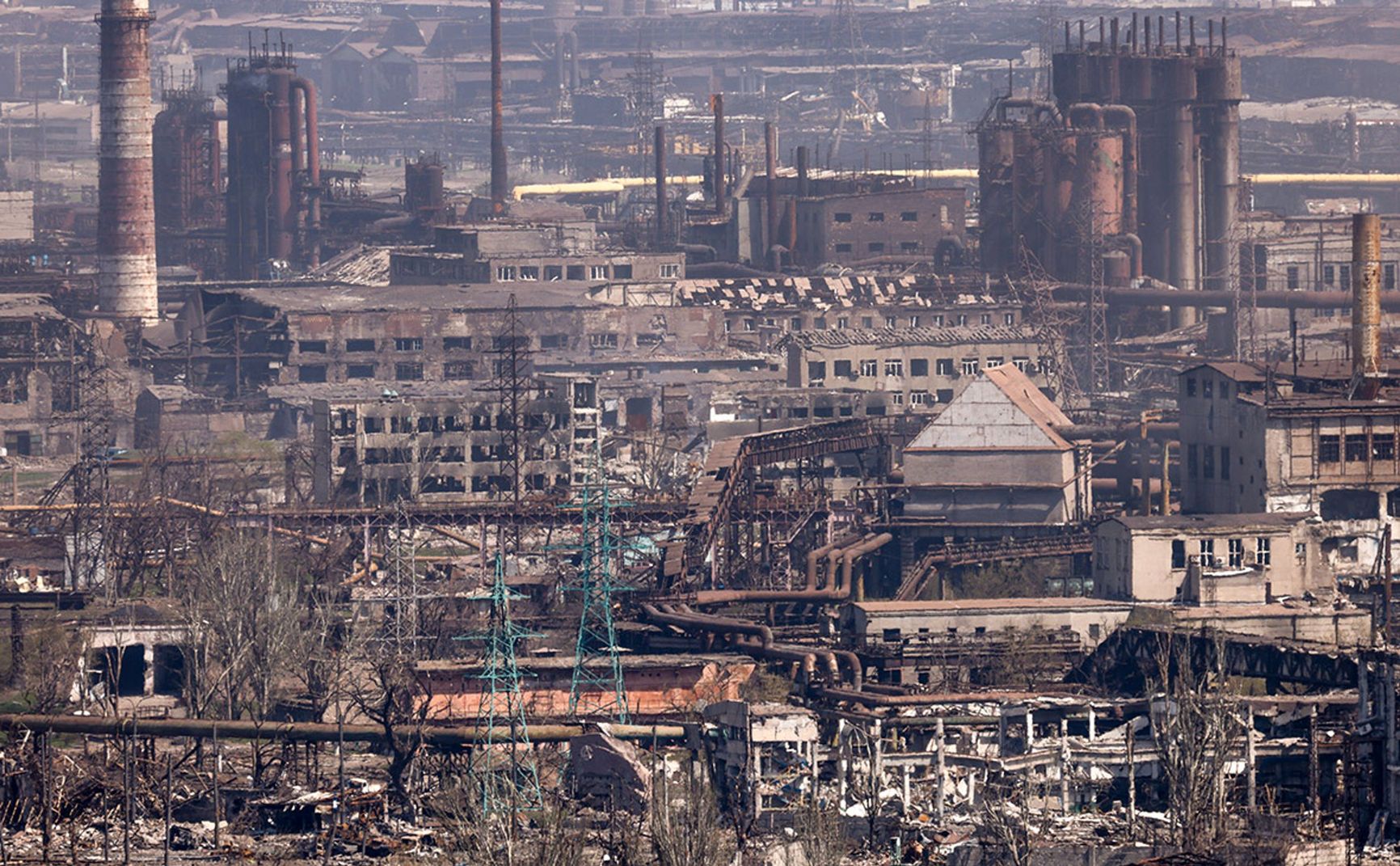
The Azovstal steel plant
Maria, from the “Map of Mariupol's Destruction” project, confirms that construction is the main source of employment in the city — and it is poorly paid, six-days-a-week labor. “There’s work, but there’s no pay,” she says bluntly. “People are constantly cheated out of their money. It's a real problem to find a job that pays on time. Or that pays at all!”
Even an official employment contract is no guarantee: companies will go months without paying salaries, citing bankruptcy as an excuse. Filing complaints with the prosecutor's office yields no results.
Even an official employment contract is no guarantee: companies will go months without paying salaries
Working residents of Mariupol are exposed to another, less obvious risk: losing their homes. “Beskhoz” is a crucial word in the local lexicon. It’s the term for “ownerless” apartments, which the city transfers to its own ownership to be used as social housing. It is widely believed that these are the apartments of people who remained loyal to Ukraine, but as Anna explains, even those who comply with the new regime are not safe. “Inspectors go door-to-door in the middle of the workday,” she says. “If you don't answer a couple of times, they list your apartment as 'beskhoz.’”
Anna’s own home did not fall into this category, but she has experience dealing with the practice nonetheless. Her mother-in-law was killed in April 2022, and despite having documents, she was buried in an unmarked grave. It took until 2024 to find her, and her next of kin have been unable to formalize the inheritance to this day. In that time, the apartment has already been declared “beskhoz” twice, and twice Anna has had to fight to have it removed from the list. “There are so many people eager to get these apartments,” she says, bewildered. “I don't understand why people agree to it. The original owners will come back eventually and take them to court. How can they legally take an apartment away so quickly?”
At the same time, many Mariupol residents are taking the opposite stance, refusing on principle to accept someone else's home. This has become one of the main social conflicts in the city. Citizens are recording collective video appeals to Putin, saying they “don't want to take what belongs to others” and asking for their own homes to be restored. According to Lilya, this has been happening since the beginning of 2024.
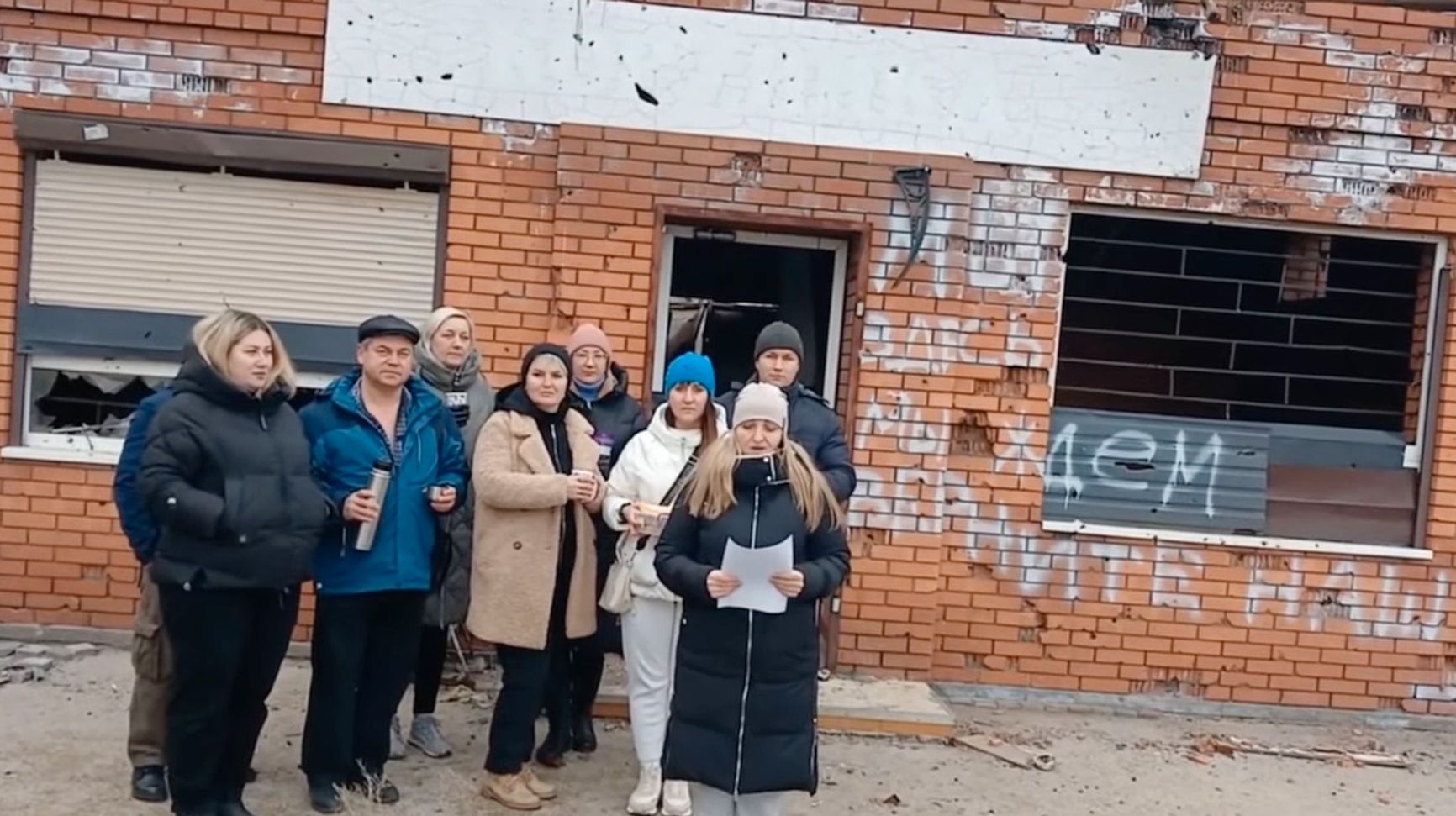
A still from a collective address by Mariupol residents to Putin
As a scapegoat for all their troubles, pro-Russian residents of Mariupol blame the leadership of the self-proclaimed “Donetsk People's Republic.” “One gets the impression that since 2014, the DNR leadership has spent most of its energy creating a regulatory framework that has turned the majority of Mariupol's residents into homeless people,” says the narrator of another video appeal.
Anna agrees. She is unhappy with what is happening in the city, but she lays all the blame on the “DNR” authorities.
“For the most part, people are resentful and don't believe the news,” she says. “They say one thing was promised, but what happened was completely different. Russia is trying, but you wouldn't believe the bloodsuckers that sit in Donetsk. They could never stand us. If only they would just annex us to the Rostov region instead.”